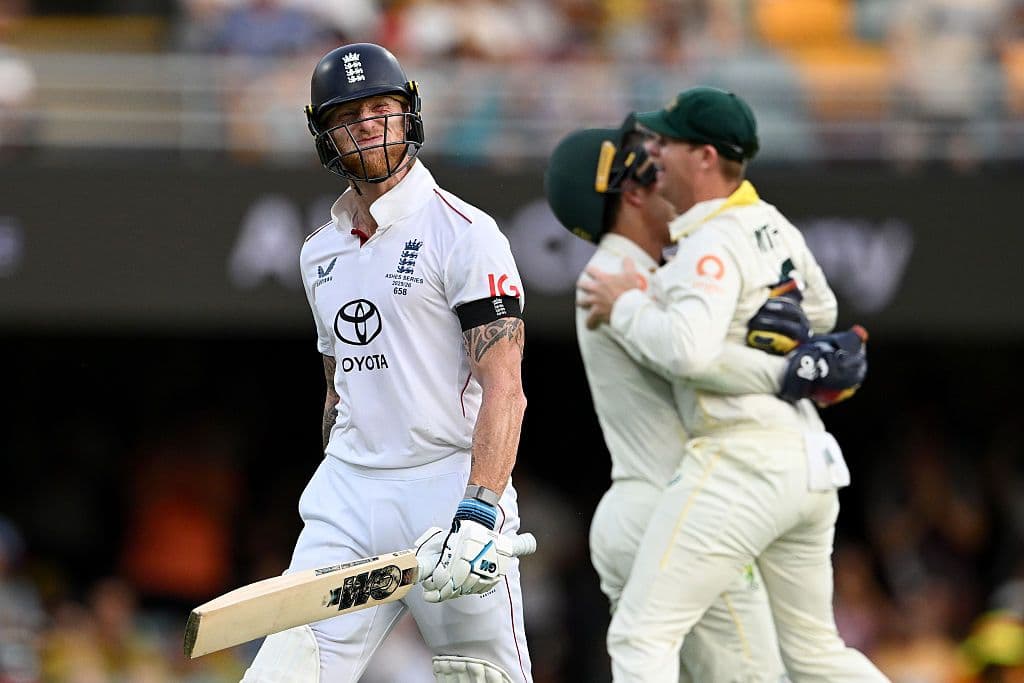UK Cricket News, Updates and Exclusive Interviews
Cricket holds a special place in the hearts of UK sports fans. It's a game of strategy, skill, and tradition—with a rich history and an evolving present. From legendary rivalries to emerging formats, cricket in the UK remains a dynamic and deeply rooted part of the sporting landscape.
England's vacationing before the third Ashes Test has been criticized. Matthew Hoggard emphasizes the need for sensible cricket tactics, longer batting periods, better bowling strategies, and adaptability. The team must focus on key moments and play to the circumstances to turn the series around.
Latest UK Cricket News and Updates
Cricket supporters in the UK are regularly treated to detailed stories across county contests, player auctions, and anything related to the national team. There are interesting stories about both red-ball matches and T20 matches that are worthy of a follow.
Latest UK Cricket Predictions
Match predictions, player form and tactical discussion are still all the rage among fans and pundits alike. It's all part of the fun when it's a case of speculating and predicting the outcome of England's next test series or an upset at county level especially for those keeping an eye on the latest cricket betting sites to add an extra layer of excitement.
History of Cricket in the UK
Origin and Early Development
Reports suggest that cricket was being played in south-eastern parts of England as early as the late 1500s as part of children's games, but it was not until the 17th century that cricket was starting to be played by adults and according to relatively formal rules. The first recorded instance of a match given a score was in 1646, after which time cricket was becoming commonplace across the country.
Evolution of the Game
Cricket has experienced significant transformations throughout the period of its inception in the late 1800s, dating as early as the first test match played in 1877 between England and Australia.
The introduction of one day international (ODI) cricket in the 1970s caused another transformation in the game of cricket, providing audiences with a shorter sporting activity without the long length of traditional test cricket.
The evolution continued in the 2000s, when test and ODI's made way for T20 cricket. The introduction of T20 cricket changed the game of cricket as it removed the slow and long boring parts of the game while providing audiences with exciting cricket.
T20 cricket is less than 20 years old and arguably most accurately represents the excitement and modern access to sport cricket had long overlooked.
Major Historical Events and Rivalries
The England vs Australia Ashes series began in1882, and today is one of the biggest rivalries in Sport. An extension of the 2019 Cricket World Cup - an accolade to celebrate its internationality and nationhood. England's win and the more recent memories of encounters with the teams from India, Pakistan and South Africa always provide a thrilling spectacle on the field.
County Cricket
Domestic cricket is the foundation of the sport in England and Wales, offering opportunities for talent development and fan engagement.
The County Championship
The County Championship is a domestic red-ball competition that lasts for four days. There are 18 first-class counties that compete in divisions. This also serves as one of the avenues for players to represent the national Test side, since many international stars have come into the game through here.
The Vitality Blast (T20)
Launched in 2003, the Vitality Blast bridged the gap between England's appetite for T20 cricket. T20 is a fast, fresh format that showcases cricket in venues bathed in telephone box-sized floodlights as keen supporters add to a carnival atmosphere. This is a competition that blends hard hitting batting, clever and tactical bowling and finishes that leave you breathless.
The Royal London One-Day Cup
The Royal London One-Day Cup is a 50-over tournament that fuses together "T20" and "Test," providing players space to develop a more aggressive intent to batting, while needing to also demonstrate more patience. It represents the middle road between domestic and international white-ball cricket and, for players seeking an opportunity to be in contention for an ODI selection, this is their time!
English Cricket Legends
Sir Donald Bradman
While Sir Donald Bradman was Australian, his impact on England was immense. His remarkable average of 99.94 in Test cricket—many of those runs scored against England—cemented him as one of the most feared and respected opponents the UK ever faced.
Ian Botham
Sir Ian Botham is one of England’s greatest all-rounders. Best known for his heroics during the 1981 Ashes (dubbed "Botham’s Ashes"), he was a match-winner with both bat and ball, and remains a cherished figure in English cricket history.
James Anderson
Still active in the international scene, James Anderson is England’s leading wicket-taker in Tests. Celebrated for his swing bowling and consistency, he became the first fast bowler in history to take 700 Test wickets—a remarkable feat of endurance and skill.
FAQs
Australian cricket culture has an unusual quirk in its traditions. The number 87 is seen as unlucky because it is 13 (unlucky) runs short of 100. This is largely superstition, though a number of players have been dismissed on that score, which hammers home the notion.
A score of 111 is known as “Nelson.” It is thought to resemble the wicket stumps without the balis and it is further intended to be unlucky. Some players even lift their feet off the ground when they are at 111 in a ritual of good luck.
Before the ball is delivered, players create runs by running between the wickets or hitting a boundary. If the ball touches the ground before the boundary, a four (4) is awarded, and a six (6) is given if the ball sailed over the boundary without touching the ground. Wickets can fall in several ways, including being bowled out, caught out, or run out.
Latest Cricket Articles
Cricket
Cricket
Cricket
Cricket
Cricket
Cricket
Cricket
Cricket
